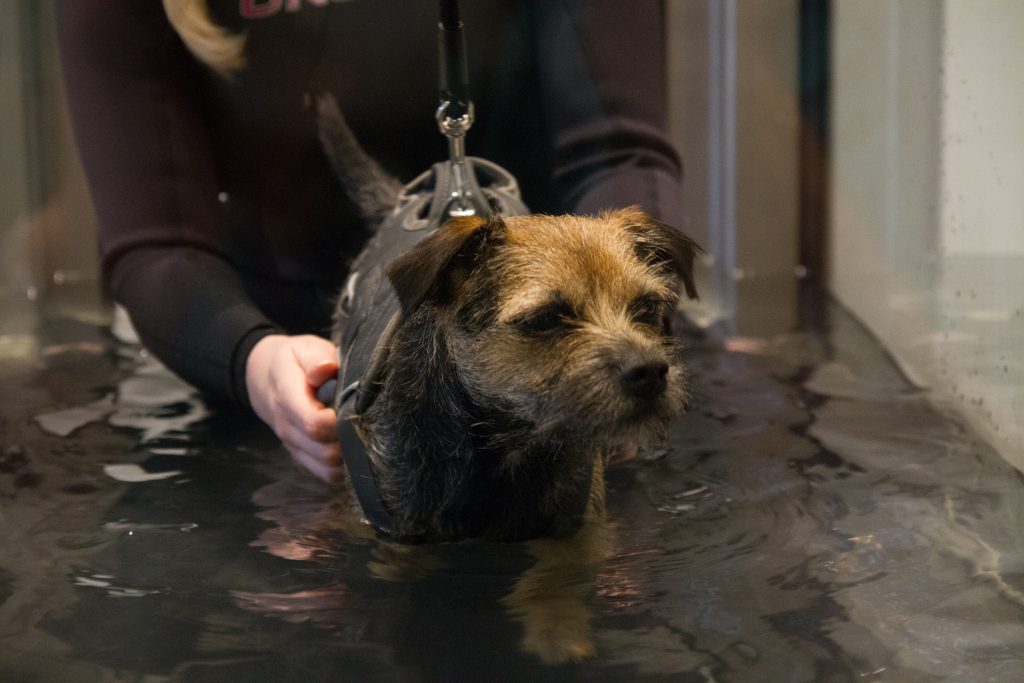Hydrotherapy – Underwater Treadmill
Our Therapy and Fitness team will assess the needs of your pet to determine which modality is the most appropriate for your pets treatment plan. Underwater treadmill therapy benefits pets suffering from arthritis, those recovering from orthopaedic surgery or a neurological condition, as well as improving the fitness of a competition or working dog.
An underwater treadmill uses the properties of water to aid the rehabilitation process for your furry companion, offering:
- Resistance to help restore muscle strength, endurance and cardiovascular health, which is variable by speed. Slow speeds are used for animals with neurological problems since the viscosity of the water gives more reaction time and they’re more likely to step correctly instead of dragging their feet. Moderate speeds are used for most post-surgical and arthritic pets initially and to warm up and cool down athletes. Fast speeds are used for athletes and stronger animals that are more advanced in their rehabilitation.
- Buoyancy reducing the impact on degenerative joints and supporting sore or weak pets, which is variable by water height.
- Controlled temperature where warmth improves circulation and aids relaxation, reducing muscle and joint pain
- Hydrostatic pressure improving circulation and reducing swelling, aiding the healing process
Further Advantages
If your pet’s recovering from surgery the gentle and low impact environment allows hydrotherapy to begin from as early as two weeks post-op after suture removal. With buoyancy ensuring less weight is going through a sore or weak limb, they’re more likely to place the limb to the ground, increasing their confidence.
Some pets may be a little fearful of the belt moving under their feet or find their coordination and body awareness is a little “off balance”, which can make the treadmill environment a little challenging. But with the careful therapeutic handling from out expert therapists, these potential obstacles are easily overcome. For pets that have a fear of water, having their limbs in contact with the floor as the water slowly fills up from the bottom, makes the underwater treadmill much less intimidating when compared to swimming.
Gait retraining on a treadmill during a treatment session allows our therapist, if required, to aid the normal movement patterns and we believe, having your pet partake in activities that have meaning to them i.e. walking or trotting in everyday situations, is more effective. So, whilst swimming benefits a small number of animals over the underwater treadmill, will swimming assist your pets’ movement on dry land? There’s growing evidence of a negative transfer effect where the experience an animal might have whilst swimming will not benefit locomotor activity when on land.
Underwater treadmill therapy should be used in addition to land-based therapies, which is why when you pet is referred to us for hydrotherapy, they are initially examined by our Chartered Physiotherapists. A recommended home management programme is designed to complement your pets’ underwater treadmill therapy, which may incorporate rehabilitation exercises that are not just performed in a straight line.


